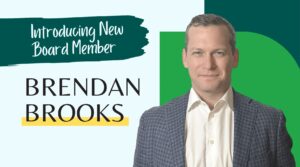As we traverse the intricate terrain of mental health, acknowledging the effectiveness of brain stimulation treatments requires a collective effort to learn and often, to dismantle ingrained misconceptions.
The journey through mental health challenges has been significantly shaped by traditional approaches. Electroconvulsive therapy (ECT) has stood as the standard brain stimulation treatment for decades. However, the evolving landscape introduces us to groundbreaking therapies such as repetitive transcranial magnetic stimulation (rTMS) and magnetic seizure therapy (MST), which are now ushering in a new era of hope and possibilities.

What Therapies are Included in the Umbrella Term “Brain Stimulation?”
- Electroconvulsive Therapy: ECT, is a well-established and robust brain stimulation treatment. Administered under general anesthesia, ECT induces controlled seizures to alleviate symptoms of severe mental health conditions, such as major depressive disorder, bipolar disorder, and certain types of schizophrenia.
- Repetitive Transcranial Magnetic Stimulation: rTMS is a non-invasive procedure that uses magnetic fields to stimulate nerve cells in the brain. This therapy involves placing an electromagnetic coil against the scalp and targeting specific brain regions associated with mood regulation. It has gained traction for its effectiveness in treating major depressive disorder, and ongoing research explores its potential applications for other psychiatric and neurological disorders.
- Magnetic Seizure Therapy: MST is an innovative brain stimulation treatment still in the research phase. Similar to ECT, MST induces seizures, but magnetic fields are used instead of electrical currents. Although not yet clinically available in Canada, ongoing trials suggest its potential for treating severe mental health conditions, such as major depressive disorder, potentially offering a more refined and controlled alternative to ECT.

Delving Deeper into Each Therapy: What We Need to Know
Electroconvulsive Therapy or ECT involves a series of sessions, usually administered over several weeks. While its exact mechanism isn’t entirely understood, ECT is believed to reset abnormal brain activity, providing relief from severe symptoms. It is a valuable option for individuals who haven’t responded to other treatments or those requiring rapid intervention due to the severity of their condition.
Brain Stimulation Clinic (ECT/rTMS) offers a combination of ECT and rTMS. This integrated approach allows for personalized treatment plans, catering to the unique needs of each patient. The versatility of having both established and emerging therapies available provides a comprehensive and individualized approach to mental health care.
Transcranial Magnetic Stimulation or rTMS sessions typically span several weeks, with patients receiving daily treatments. It is a well-tolerated procedure, as patients remain awake throughout the sessions. While currently clinically approved for treating major depressive disorder (MDD), ongoing research explores its potential applications for bipolar disorder, obsessive-compulsive disorder, and post-traumatic stress disorder, showcasing its versatility and expanding scope.

Misconceptions, Research, and Evidence
Despite their efficacy, brain stimulation therapies often face misconceptions rooted in historical stigmas and depictions in popular media. One common misconception is the association of ECT with extreme and outdated practices. In reality, modern ECT is conducted under precise, carefully regulated and monitored conditions, ensuring patient safety and comfort.
Research consistently highlights the effectiveness of brain stimulation therapies. ECT, with its rapid onset of action, has shown remarkable success in treating severe depression and catatonia. And rTMS, while currently approved for major depressive disorder, is under investigation to assess its efficacy in treating a variety of other disorders. Studies have demonstrated its effectiveness in alleviating symptoms and improving quality of life for many individuals.
In the face of persistent misconceptions, education and awareness initiatives are crucial. Public discourse should focus on disseminating accurate information about the safety, effectiveness, and modern protocols of brain stimulation therapies. By fostering a more informed and empathetic understanding, society can reduce the stigma associated with these treatments which are paving the way for improved mental health care and outcomes.

Where to Access Brain Stimulation Treatments
Access to treatment varies, but many mental health facilities, particularly those with specialized Brain Stimulation Clinics, offer a range of options. It is essential for individuals to consult with mental health professionals to determine the most suitable treatment based on their specific condition and needs.
While magnetic seizure therapy is not yet clinically available in Canada, individuals interested in exploring this emerging therapy may have the opportunity to participate in clinical trials.
The Centre for Addiction and Mental Health (CAMH) offers a comprehensive breakdown of access options.
As we navigate the complex terrain of mental health, the evolution of brain stimulation treatments brings forth new avenues of hope. ECT remains a steadfast option, while rTMS and MST open doors to alternative, personalized approaches.
By dispelling misconceptions, highlighting the benefits, and understanding where to access these treatments, individuals can make informed choices. Hopefully, society can embrace the transformative potential of these therapies, and foster a more compassionate and supportive environment for those navigating the complexities of mental health.
Eli’s Place will be a rural, residential treatment program for young adults with serious mental illness. To learn more about our mission and our proven-effective model click here.




